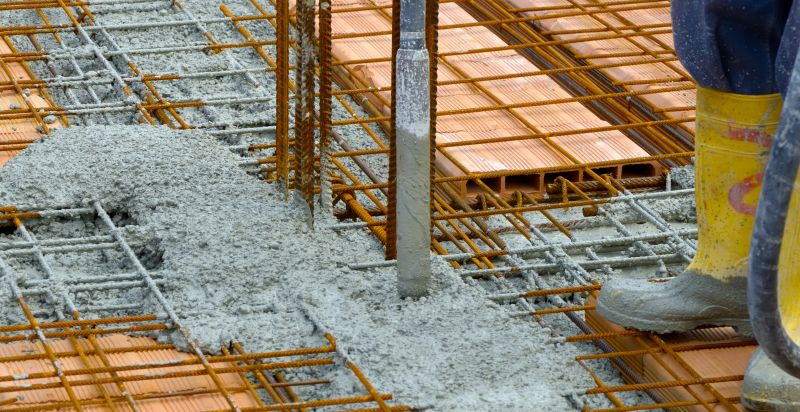Get help with your concrete rebar installation needs. Fill out the form above and we will connect you with local pros in your area. Concrete rebar installation is a crucial step in constructing durable and long-lasting structures. By reinforcing concrete with steel bars, known as rebar, the structural integrity and load-bearing capacity of the concrete are significantly enhanced. This method provides numerous benefits, including increased resistance to tension, improved resistance against cracking, and enhanced overall strength. Concrete rebar installation ensures that the concrete structure can withstand heavy loads, seismic activity, and extreme weather conditions, making it a reliable choice for various construction projects. With proper concrete rebar installation, structures are better equipped to withstand the test of time, ensuring the safety and longevity of the building.
Concrete rebar installation is a crucial step in reinforcing concrete structures to enhance their strength and durability. This process involves the strategic placement of steel bars, known as rebar, within the concrete to provide added support and prevent cracking or collapsing under pressure. By intertwining the rebar with the concrete, it creates a solid bond that improves the overall structural integrity of the project. Proper concrete rebar installation ensures that the concrete can withstand heavy loads, seismic activity, and other external forces. With precise positioning and secure anchoring, rebar installation significantly enhances the resilience of concrete structures, making them more resistant to wear and tear, and extending their lifespan.
Concrete Rebar Installation FAQ
Q: What Is The Purpose Of Rebar In Concrete Installation?
Answer: The purpose of rebar in concrete installation is to provide reinforcement and strength to the concrete structure, helping to prevent cracking and improve its overall durability.
Q: How Is Rebar Installed In Concrete?
Answer: Rebar is installed in concrete by first determining the required spacing and depth, then placing the rebar in the desired position within the concrete formwork. The rebar is secured in place using wire ties or rebar chairs to ensure proper alignment and spacing. Finally, the concrete is poured and allowed to cure, bonding with the rebar to create a strong and reinforced structure.
Q: What Are The Best Practices For Ensuring Proper Rebar Installation In Concrete?
Answer: Some of the best practices for ensuring proper rebar installation in concrete include accurately placing and spacing the rebar according to design specifications, ensuring proper alignment and verticality, securely tying the rebar intersections, and adequately covering the rebar with concrete to prevent corrosion. Additionally, conducting regular inspections and following industry standards and guidelines can help ensure a successful rebar installation in concrete.

